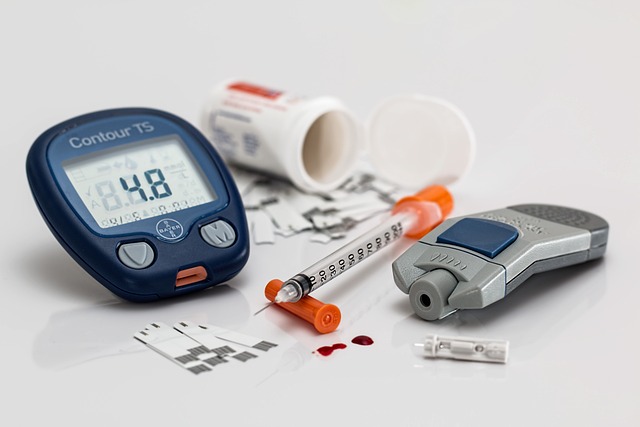In an era where chronic diseases, mental health challenges, and health disparities are on the rise, community programs have emerged as a vital tool for promoting public health. These initiatives—ranging from fitness classes and nutrition workshops to mental health support groups and preventive care screenings—are designed to address the unique needs of local populations while fostering a sense of belonging and shared responsibility. By empowering individuals, reducing barriers to care, and creating supportive environments, community programs play a pivotal role in improving overall health outcomes. This article explores the multifaceted importance of these programs and their impact on individual and collective well-being.
1. Bridging Gaps in Access to Healthcare
One of the most significant contributions of community programs is their ability to reach underserved populations who face barriers to accessing traditional healthcare services. These barriers can include financial constraints, lack of transportation, cultural differences, or limited health literacy.
- Preventive Care: Many community programs offer free or low-cost screenings for conditions like diabetes, hypertension, and cancer. Early detection through these initiatives can prevent the progression of diseases and reduce long-term healthcare costs.
- Health Education: Workshops and seminars on topics such as nutrition, exercise, and disease management equip participants with the knowledge they need to make informed decisions about their health.
- Cultural Sensitivity: Community programs often tailor their services to reflect the cultural, linguistic, and socioeconomic backgrounds of the people they serve, ensuring greater inclusivity and effectiveness.
2. Encouraging Healthy Lifestyles
Community programs provide accessible opportunities for individuals to adopt healthier habits, which can be challenging to implement without guidance and support.
- Physical Activity: Group fitness classes, walking clubs, and recreational sports leagues encourage regular exercise, helping combat sedentary lifestyles that contribute to obesity, heart disease, and other chronic conditions.
- Nutrition Initiatives: Programs like cooking demonstrations, community gardens, and grocery store tours teach participants how to prepare nutritious meals on a budget, making healthy eating more attainable.
- Smoking Cessation and Substance Abuse Support: Many communities offer resources to help individuals quit smoking or overcome addiction, addressing behaviors that significantly impact health.
By embedding health-promoting activities into daily life, these programs normalize healthy choices and create sustainable behavior change.
3. Fostering Mental Health and Social Connections
Mental health is an integral part of overall well-being, yet it is often overlooked in discussions about public health. Community programs address this gap by providing safe spaces for connection, self-expression, and emotional support.
- Support Groups: Programs focused on mental health, grief counseling, or stress management help individuals cope with personal challenges in a non-judgmental environment.
- Reducing Isolation: Loneliness and social isolation are linked to numerous health issues, including depression, anxiety, and even cardiovascular disease. Community events, volunteer opportunities, and group activities foster social bonds, combating feelings of loneliness.
- Building Resilience: Skills-based workshops, mindfulness sessions, and art therapy programs empower individuals to develop coping mechanisms and build resilience against life’s challenges.
4. Addressing Health Disparities
Health disparities—inequities in health outcomes based on factors like race, income, education, and geography—are a persistent issue worldwide. Community programs are uniquely positioned to tackle these disparities at the grassroots level.
- Targeted Interventions: Programs can focus on specific populations, such as low-income families, seniors, or minority groups, addressing their distinct health needs and challenges.
- Advocacy and Awareness: Community initiatives often raise awareness about systemic issues contributing to health inequities, advocating for policy changes and increased funding for marginalized communities.
- Empowerment Through Participation: When individuals actively engage in programs designed to improve their health, they gain a sense of agency and ownership over their well-being, breaking cycles of dependency and disempowerment.
5. Promoting Preventive Care Over Reactive Medicine
A cornerstone of community programs is their emphasis on prevention rather than treatment. By educating and equipping individuals to take proactive steps toward their health, these programs reduce the burden on healthcare systems and improve quality of life.
- Chronic Disease Management: Programs targeting conditions like diabetes, hypertension, and asthma provide tools for monitoring symptoms, adhering to treatment plans, and avoiding complications.
- Vaccination Campaigns: Immunization drives organized at the community level protect vulnerable populations from infectious diseases, contributing to broader public health goals.
- Youth Engagement: Initiatives aimed at children and adolescents, such as anti-bullying campaigns, sexual health education, and physical activity programs, lay the foundation for lifelong healthy habits.
Prevention not only saves lives but also reduces healthcare costs, benefiting both individuals and society as a whole.
6. Strengthening Community Resilience
Healthy communities are resilient communities. When members come together to prioritize health, they create a ripple effect that extends beyond individual benefits.
- Collective Action: Community programs inspire collaboration, encouraging residents to work together toward common goals, such as creating smoke-free public spaces or organizing farmers’ markets.
- Role Models and Leaders: Successful participants often become advocates within their communities, inspiring others to join and amplifying the program’s impact.
- Sustainable Change: By addressing root causes of poor health—such as poverty, lack of education, and environmental hazards—community programs contribute to long-term improvements in quality of life.
Examples of Effective Community Programs
Several real-world examples highlight the transformative power of community-based health initiatives:
- “Walk With a Doc”: A global initiative where doctors lead group walks, combining physical activity with informal health education.
- Farm-to-School Programs: Connecting schools with local farms to provide fresh produce for school meals, teaching kids about nutrition, and supporting local agriculture.
- Mental Health First Aid Training: Equipping community members with skills to identify and respond to signs of mental health crises, reducing stigma and increasing access to care.
- Faith-Based Health Ministries: Churches and religious organizations offering health screenings, fitness classes, and wellness workshops to congregants.
These programs demonstrate that health promotion doesn’t require elaborate infrastructure—it thrives on creativity, collaboration, and commitment.








